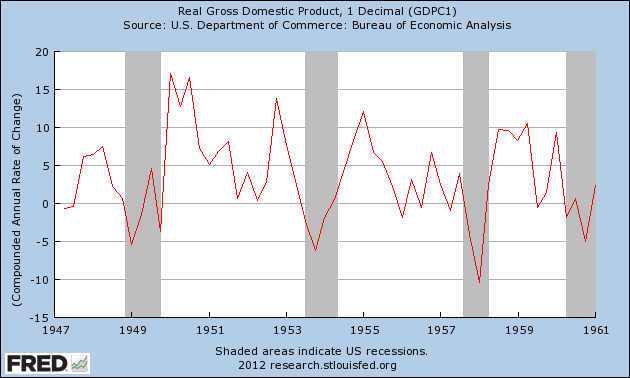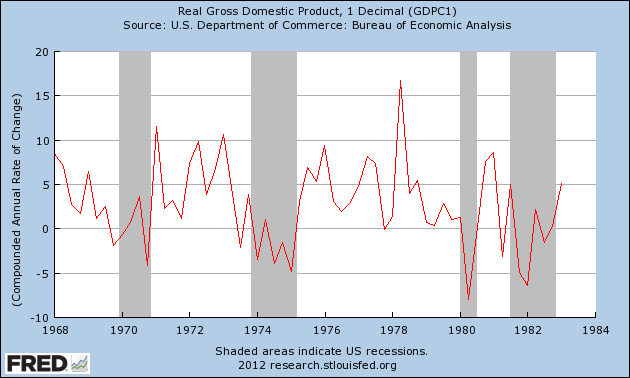- by New Deal democrat
While the formal definition of a recession is a pronounced downturn in sales, income, production, and jobs, informally it is usually evidenced by at least two quarters of negative GDP. In the case of the 2001 just-barely-a-recession, the two quarters of negative GDP were separated by one quarter of growth, at the end of the recession GDP was actually higher GDP than when it began.
Two weeks ago a prominent forecaster scoffed at the idea that a recession could not have begun because of first quarter GDP of +2.2%, pointing out that GDP was typically positive in the quarters that past recessions have begun.
A closer examination reveals that while he was correct, in context his conclusion was misleading. Since economic statistics don't typically move in a straight line, when we add in the quarter before the start of recessions, it turns out there usually is a negative quarter.
Unfortunately I can't show you a bar graph with recession indicators, so you'll have to squint a bit to see my point in the below graphs. Quarterly GDP started to be reported after the Second World War. Here's the immediate postwar era to the 1960's:

Now here is the stagflationary 1970's and the double-dip Fed induced recession:

Here are the last 3 recessions up to the present:

There have been 11 recessions since quarterly GDP has been reported. In 6 of the 11 cases (1948, 1957, 1973, 1980, 1981, and 2007), the quarter when the recession began recorded positive GDP.
However, when we consider both that quarter and the quarter immediately before the recession began, in 8 of the 11 cases, at least one of the two quarters had negative GDP. The only exceptions were 1948, 1980, and 2007.
In the three cases where both quarters were positive, growth was rapidly decelerating, and in the quarter that the recession began annualized growth was +0.8% once and +1.7% twice.
Acknowledging that we have a limited data-set, applying that to our current economy means that growth absolutely continued in the first quarter. Obviously there is no report for the current quarter, but if GDP for this quarter remains positive, it is very likely that the expansion is continuing, and if growth should exceed 2% again this quarter, recession is off the table. Of course, GDP statistics are infamous for being revised. The second estimate of first quarter growth will be reported next week.